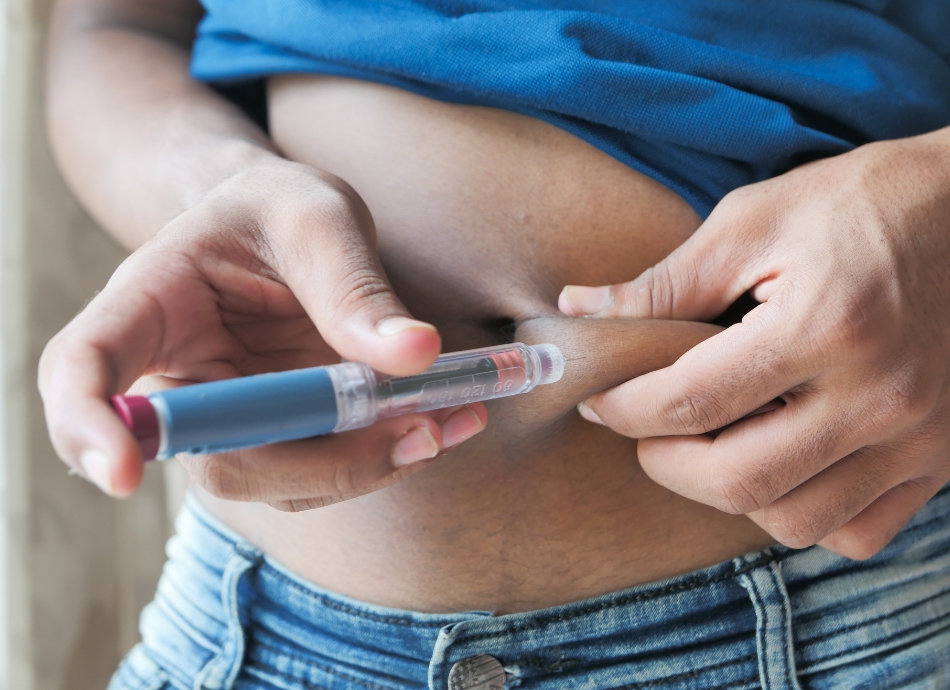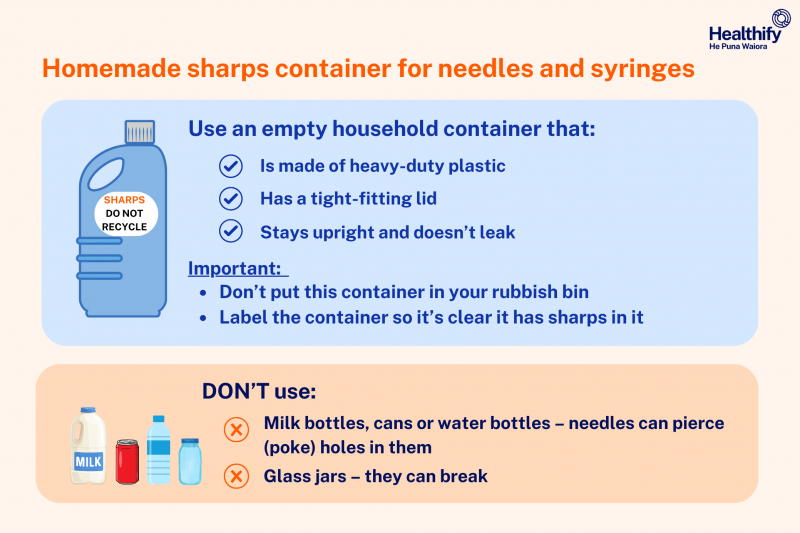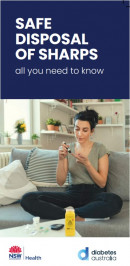Wishing everyone happy holidays and a joyful New Year from the Healthify team. Don't forget to Slip, Slop, Slap and Wrap!
Safe disposal of syringes, needles and other sharps
Key points about the safe disposal of syringes, needles and other sharps
- Sharps are needles or devices that penetrate the skin.
- It's very important that sharps are disposed of safely using a suitable container, immediately after use.
- Find out how to access a container or make your own.

Sharps are needles or devices that penetrate your skin such as:
- syringes
- pen needles
- pre-filled pens
- pre-filled syringes
- lancets (finger prickers)
- insulin pump insertion needles (not the tubing)
- auto-injectors (injection devices that are pre-loaded with medicine).
It's very important that sharps are disposed of safely
It's very important that sharps are disposed of safely using a sharps disposal container, immediately after use. They can cause injury and, once used, they have fluids from your body on them, such as blood. If a used needle pierces somebody else's skin it can pass on an infection such as hepatitis B, hepatitis C and human immunodeficiency virus (HIV). Read more about needlestick injuries.
You shouldn't dispose of sharps in your household bin or recycle bins. Don't flush sharps down the toilet. See below for information about what a sharps disposal container is and how to use it safely.
Medical grade sharps container
Medical grade sharps containers are made of puncture proof plastics and have a secure lid to reduce the risk of needle stick injuries. They are the preferred option because they're especially designed to be safe.
- Medical grade sharps containers can be bought from pharmacies or medical waste disposal companies, which may include a pick-up service.
- Some pharmaceutical companies offer a service where they provide you with a medical grade sharps container when you start treatment. Ask your pharmacist if this is an option for you.
Home made sharps container
When you get your medication from your pharmacy, talk to them about whether you can bring your used sharps back for disposal. In many regions this is an option. Pharmacies may accept your sharps in a suitable household container. They’ll tell you which ones are safe to use (not all containers are suitable).
If you're making a sharps container yourself, here are some safety tips.
Use an empty household container that:
- is made of heavy duty plastic
- has a tight fitting lid that can be screwed on and can't be punctured
- is able to stand upright (won't fall over)
- is leak proof.
Suitable examples are a laundry detergent bottle or liquid laundry softener bottle.
Remember to label the container to warn others of hazardous waste inside the container.
It's also important to be prepared when you're on holiday – make sure you have a portable sharps disposal container for travelling.

Unsuitable containers
Don't use containers such as soft drink bottles, glass containers, aluminium cans or cardboard boxes. These aren't puncture-resistant or shatterproof, which may expose the sharps inside if they break. Containers made of thin plastic may not be suitable because the needles can pierce the plastic.
Whether you use a medical grade sharps container, or a home made one, it's important they're used correctly.
- Make sure the sharp end, or the pointed end of the sharp or needle, goes into the container first and isn't sticking out of the top of the container.
- Sharps containers must be placed out of reach of children and pets.
- Medical grade sharps bins must not be filled above the ‘fill line’.
- When bins are full, they must be sealed and labelled.
- Full bins must be securely stored. Read below about how to dispose of a full sharps bin.
Don't (✘)
- Don't put your hand in the sharps container.
- Recycle or reuse (needles and lancets are single use only).
- Pull syringes apart before putting them in the sharps bin.
- Put needles or sharps in any other containers for example drinks cans or bottles.
- Put used needles in your household waste bin.
- Fill the sharps bin more than 3/4 full or over the "Do not fill above this line" marker.
- Force sharps into a full bin by pushing down with your hands.
- Try to recap a needle.
Arrangements for disposing of full sharps container vary depending on where you live.
- Ask your community pharmacy if they provide a service where you can bring your used sharps back for disposal. Pharmacies may accept your sharps in a suitable container. They’ll tell you which containers are safe to use (see above for a general guide).
- Local councils may dispose of sharps containers. Contact your local council.
- Do not put sharps bins into domestic waste.
Needle exchange programme
Note, the New Zealand Needle Exchange Programme is a nationwide programme supporting people who inject drugs by providing access to clean needles, syringes and other harm reduction equipment. They also provide advice, information and education to improve the health and wellbeing of people who inject drugs. Read more about the New Zealand Needle Exchange Programme(external link).
Your guide to safe disposal of sharps(external link) Arthritis Australia
Brochures

Safe disposal of sharps – all you need to know
NSW Health and Diabetes Australia, 2024

Medicines and side effects
Healthify He Puna Waiora, NZ, 2024

Health Quality and Safety Commission, NZ, 2019 English, te reo Māori
Credits: Sandra Ponen, Pharmacist, Healthify He Puna Waiora. Healthify is brought to you by Health Navigator Charitable Trust.
Reviewed by: Angela Lambie, Pharmacist, Auckland
Last reviewed:





